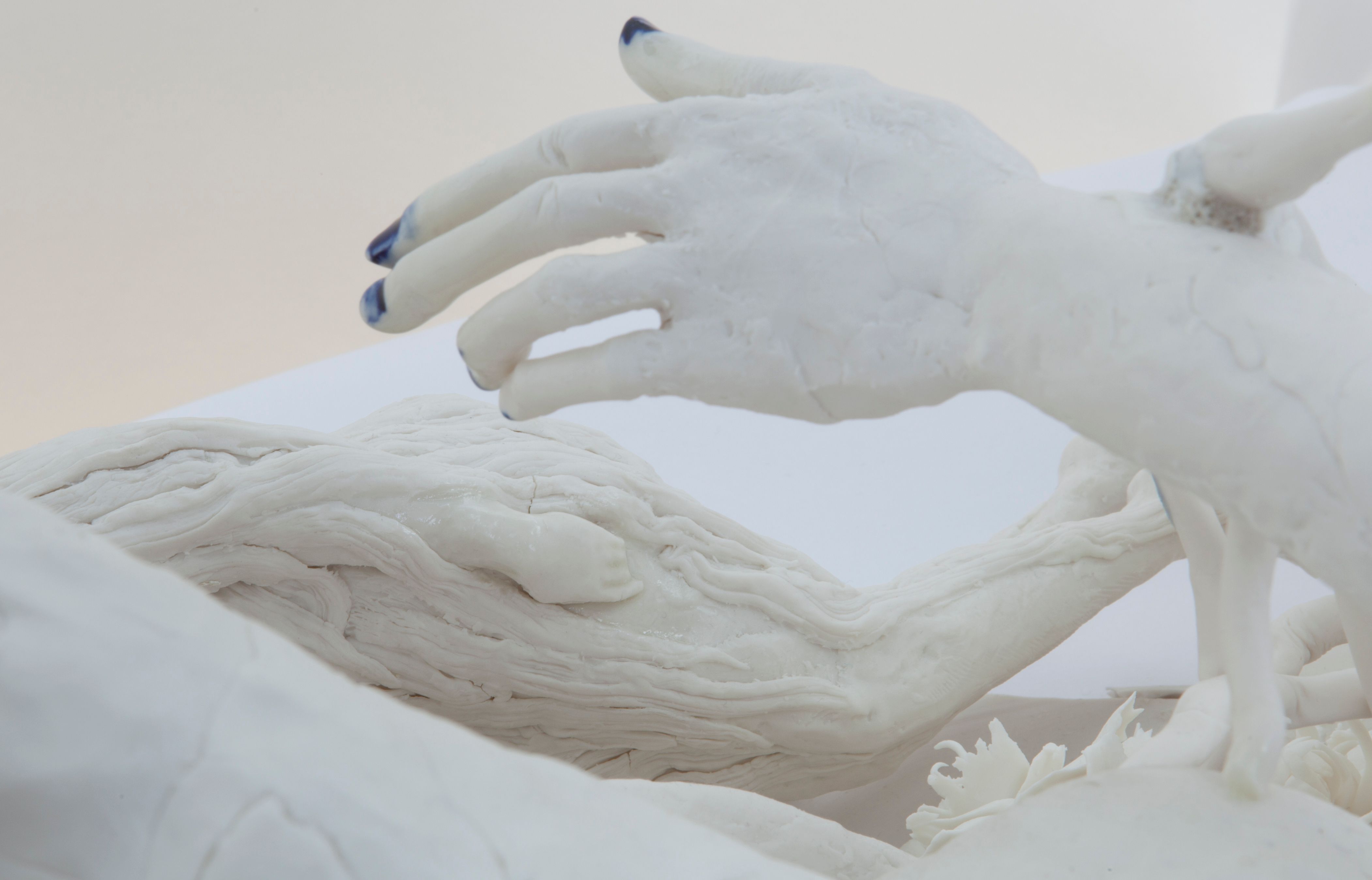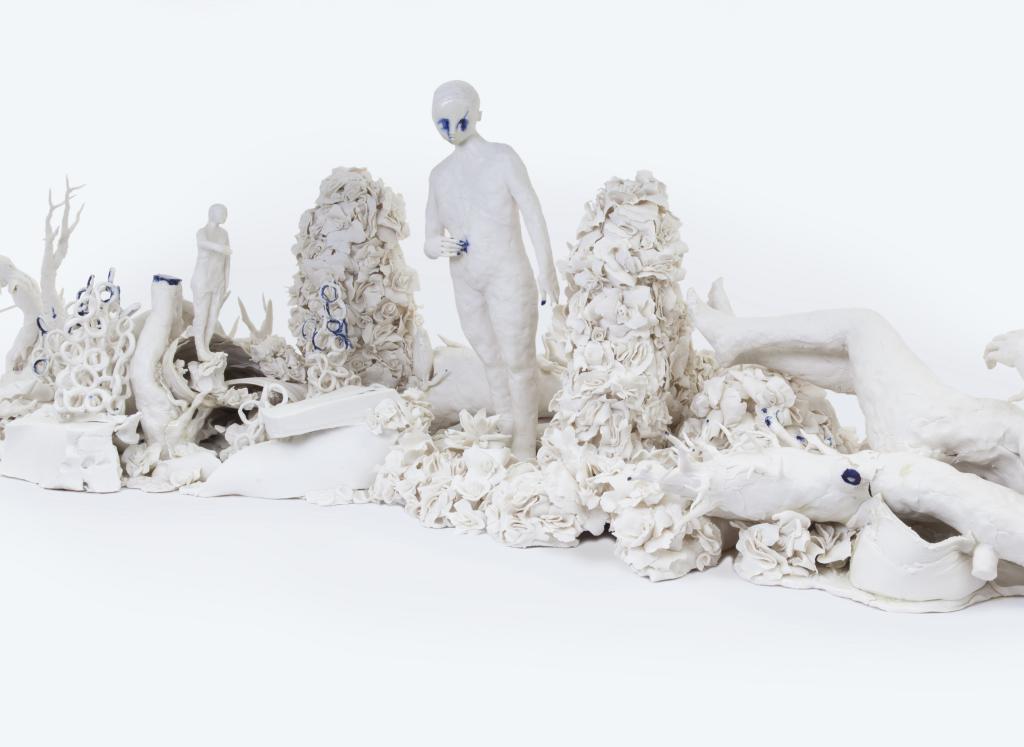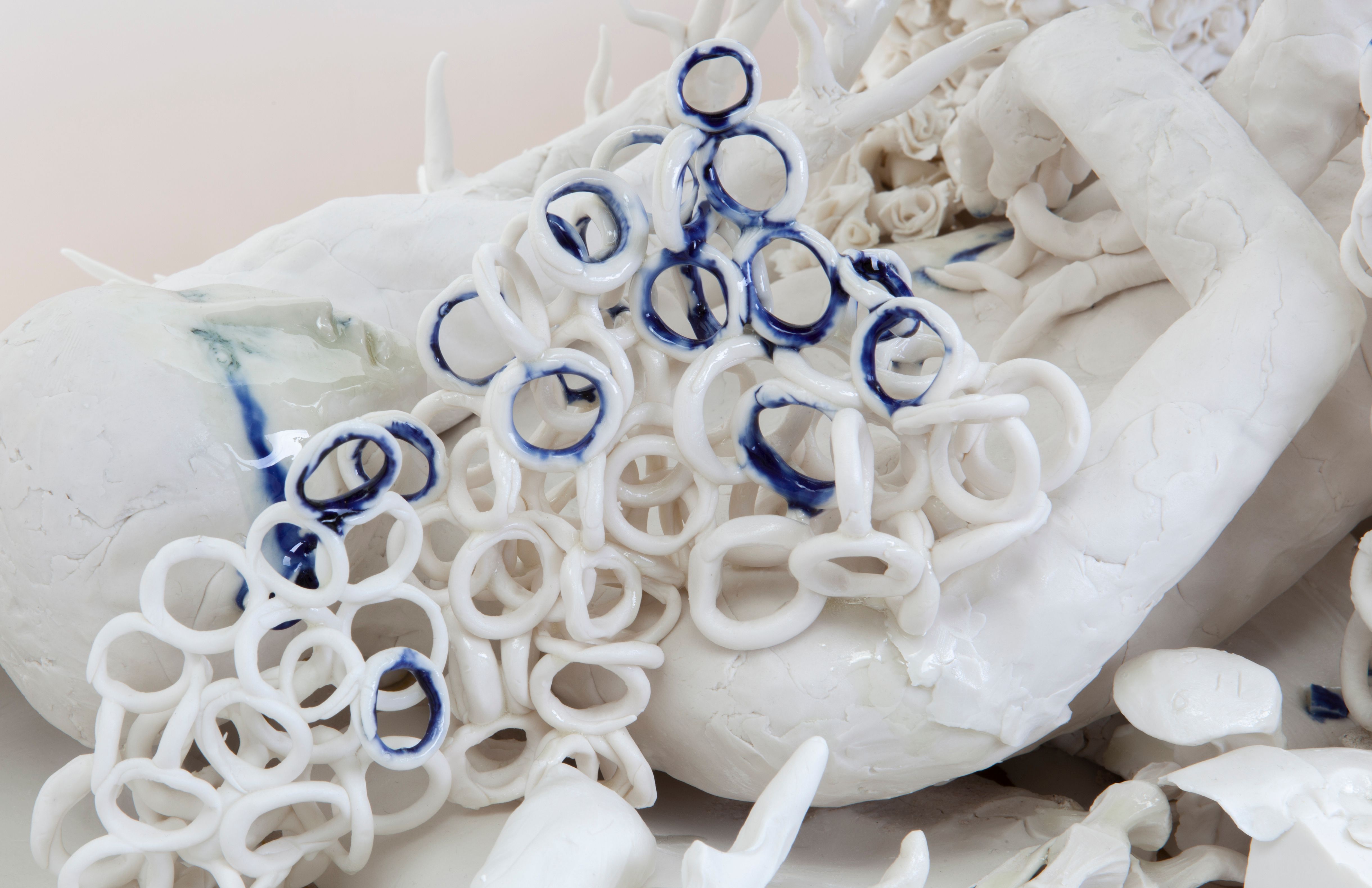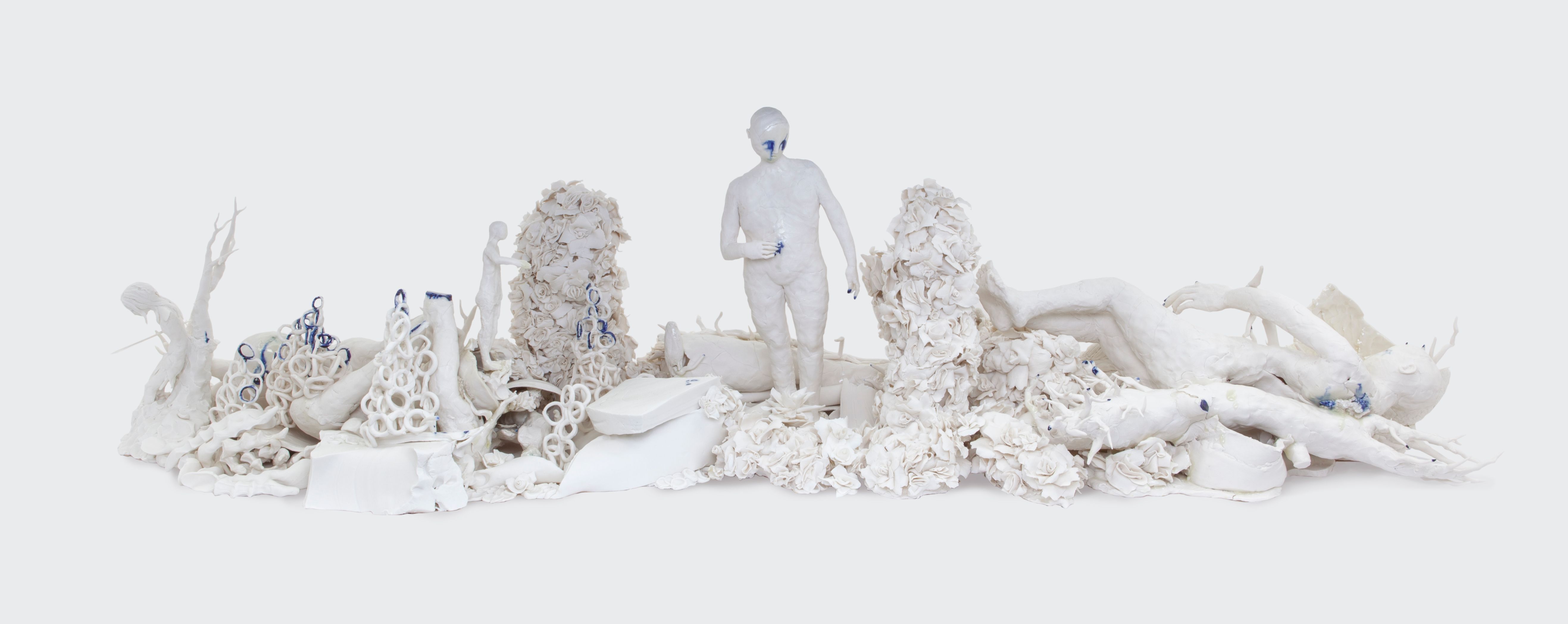
Interview: Claire Curneen
We spoke to Claire Curneen about her practice and the incredible works that have been installed in Gallery 5.

My name is Claire Curneen, I'm a ceramic artist and I was invited to show this piece Baroque and Berserk at the Walker in relation to the Year of Craft display curated by Nicola Scott. My work is sculptural in nature, but I’m very interested in the crafting of objects, so that's how I’m here.
Can you tell me about the works on display?
In the 18th century gallery, I have a piece called Baroque and Berserk it’s one large sculptural diorama and it has figures that emerge from broken pieces of pots, trees, and fragments. So, it feels very much in a state of turmoil I suppose but there is a central figure that kind of rises from this broken piece that feels optimistic, there's this kind of redemption in it.
It's kind of like a sister piece to a piece I have in the V&A in London that was acquired a few years ago which is very similar in nature, it's called 'Tending the Fires' I've only made two big pieces like this before. Where it sits in the 18th-century gallery is perfect for it, as the title Baroque and Berserk matches that time period, so it was very timely. The cases used to hold very precious decorative objects and Nicola's reinterpreted that and displayed my porcelain objects. The gallery is just a beautiful space to have my work in, and I love being near the Stubbs and Gainsborough, one of my favourite paintings from when I was 17 by Lucien Freud here as well, I saw it this morning, I remember seeing it in a book and now I’m here which is great.

Could you tell me about when you started working with ceramics?
It goes back to art school when I was 17/18, I started to work with clay as a material, very much in a sculptural manner, and then from that point went through education. I went to Belfast and studied my postgraduate, then I went to Cardiff and did a master’s degree and now I teach there. Whatever project I had as a student I found ways to use clay as a way of expression as I find it so beautiful.
And did you always use porcelain?
Not at the very beginning, it’s a difficult material to understand and get your head around and manipulate because there is a lot of technical issues. I've been working with it for 30 years now, it is very particular in that it absorbs light, it’s translucent so it needs very little embellishment to make it beautiful. Because of this you just take it from the bag, model it, and put it in the kiln that's all really you have to do, and in the kiln that’s where the magic happens.
Human forms appear a lot in your works, where do they come from?
The figures have always been a central theme, figures in art are something that I'll always find in things. It’s what we inhabit, they are our bodies, it's what we know so the body is key for me to make a point or express an idea. To sit in a room like the 18th-century gallery with all the portraits of figures around my figures is great, it’s very connecting.

Are your works influence by books, films, music?
I'm devoted to looking at Italian renaissance paintings, I love the theatre of religious iconography. I’m catholic Irish so the image of Christ is always a theme because of my upbringing. However, quite recently I've started to look at one of my favourite films ‘Close Encounters of the Third Kind’, it's a very well-known kind of Hollywood film from the 70s and I've returned to it as an adult. I love the sense of the main character trying to figure out this otherworldly thing of space and Martians and things like that. There's a lot of scenes in it where he's making things in clay, he makes a big mountain in his living room, he's trying to figure out an idea that he doesn't know, I liken the artist to his character in the film because he’s just trying to figure something out that he doesn’t know and I think arts about that.
Can you talk about the narrative elements of your work?
I always get a bit tripped up with narrative because I'm not depicting a particular storyline, what happens is the figure in a way starts to unravel some form of narrative that I haven't had much control over. So, the figure will gesture and make a movement, like for instance, a hand movement with a touch of blue. It will start to suggest something in the piece, a narrative will start to unravel, so the tip of the fingers that are blue, may connect to another part of the sculpture that has blue on it and it will start making these links. The kind of themes then start to become more about creativity and what happens when we try to create something. It's quite ambiguous in that sense, I don't want to preach something, I don't have a banner to layout, it's subtle I suppose and subtly in the narrative is something that I'm always battling with I suppose.

How does it feel to have your works in the Walker?
It’s wonderful, there is nobody in here today and to be able to walk up through and past the Turner is amazing, there is such an extraordinary collection here and maybe we don't know enough about it, I didn't actually, I have to admit. Having my piece in the 18th-century galleries is very apt as well, I think the porcelain feels very special in there, it’s kind of a thematic thing, there's not porcelain in the paintings but it just feels like the whiteness of the material kind of reflects around the room and the paintings have a beautiful material quality. In terms of being in the Walker, in general, it’s great, it’s fantastic, my connection really is through Dave and Alan Hudson who were brought up here, they spent every weekend visiting so it's newer to me but it’s a real compliment to have my work here.
